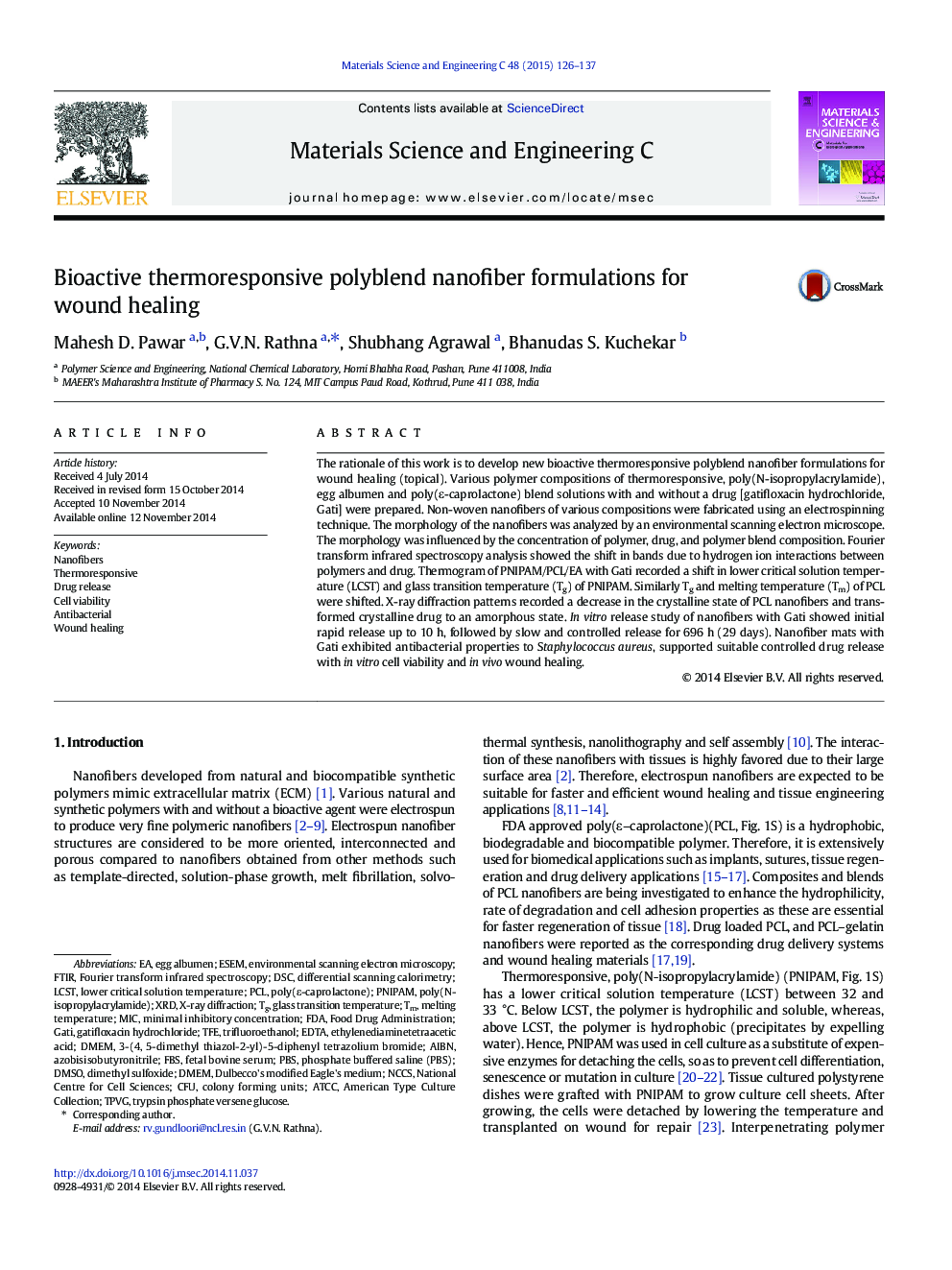| کد مقاله | کد نشریه | سال انتشار | مقاله انگلیسی | نسخه تمام متن |
|---|---|---|---|---|
| 1428441 | 1509173 | 2015 | 12 صفحه PDF | دانلود رایگان |

• Thermoresponsive and bioactive nanofiber blends of PNIPAM/EA/PCL were fabricated.
• Nanofiber blends favored initial rapid release, followed by controlled release.
• In vitro cell viability of pure polymers and nanofiber blends was least toxic.
• In vivo studies of drug loaded nanofiber mats recorded faster tissue regeneration.
The rationale of this work is to develop new bioactive thermoresponsive polyblend nanofiber formulations for wound healing (topical). Various polymer compositions of thermoresponsive, poly(N-isopropylacrylamide), egg albumen and poly(ε-caprolactone) blend solutions with and without a drug [gatifloxacin hydrochloride, Gati] were prepared. Non-woven nanofibers of various compositions were fabricated using an electrospinning technique. The morphology of the nanofibers was analyzed by an environmental scanning electron microscope. The morphology was influenced by the concentration of polymer, drug, and polymer blend composition. Fourier transform infrared spectroscopy analysis showed the shift in bands due to hydrogen ion interactions between polymers and drug. Thermogram of PNIPAM/PCL/EA with Gati recorded a shift in lower critical solution temperature (LCST) and glass transition temperature (Tg) of PNIPAM. Similarly Tg and melting temperature (Tm) of PCL were shifted. X-ray diffraction patterns recorded a decrease in the crystalline state of PCL nanofibers and transformed crystalline drug to an amorphous state. In vitro release study of nanofibers with Gati showed initial rapid release up to 10 h, followed by slow and controlled release for 696 h (29 days). Nanofiber mats with Gati exhibited antibacterial properties to Staphylococcus aureus, supported suitable controlled drug release with in vitro cell viability and in vivo wound healing.
Figure optionsDownload as PowerPoint slide
Journal: Materials Science and Engineering: C - Volume 48, 1 March 2015, Pages 126–137